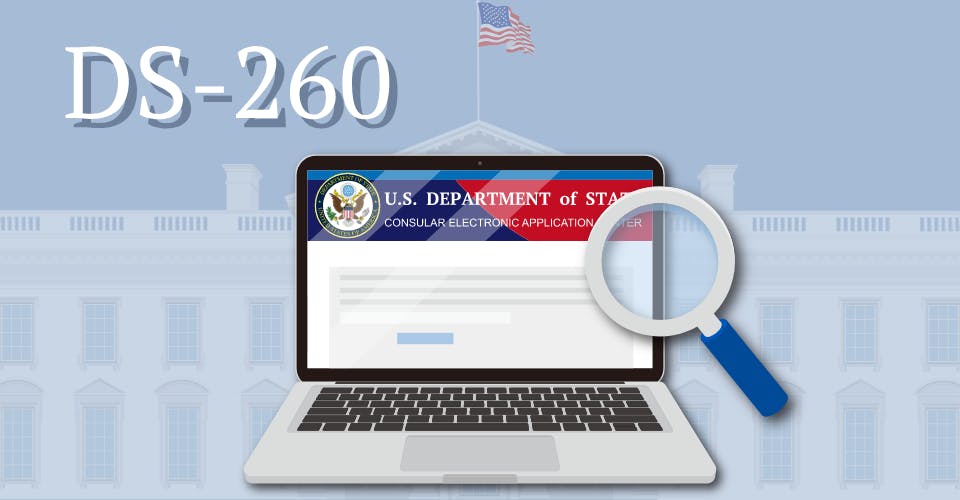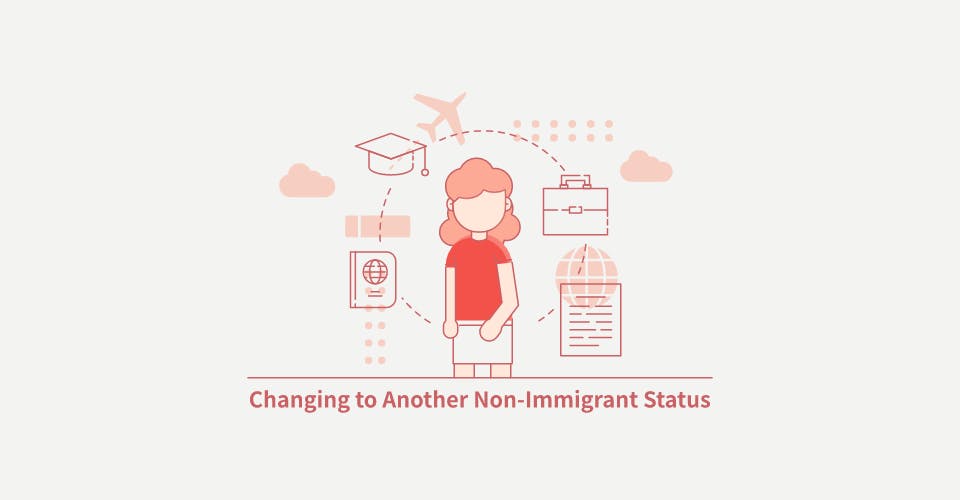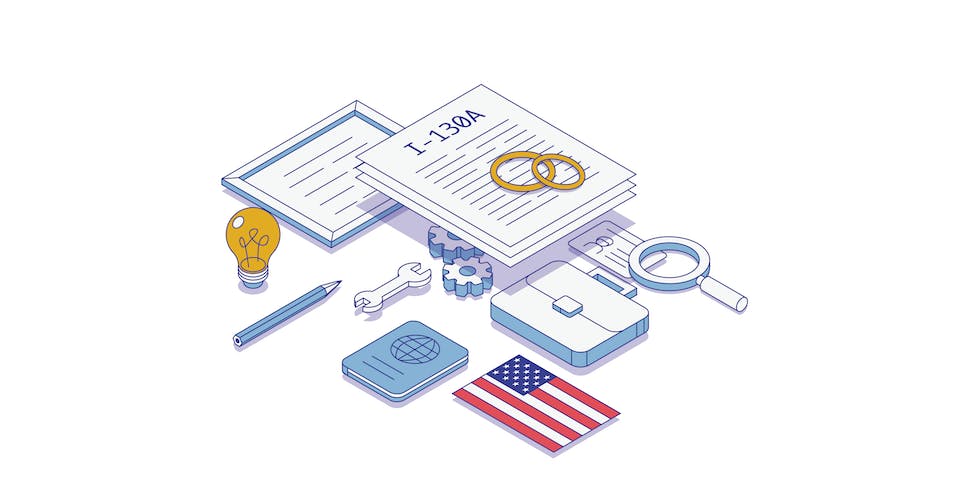If you are in the United States and filing for an adjustment of status, the main application that you need to worry about is the I-485, which is an available PDF you can download on the USCIS website. However, immigrants who are living abroad and applying for a green card (which can be comprised of many different categories, such as being married to a U.S. citizen or a U.S. based green card holder) need to go through consular processing and therefore need to file a DS-260 form.
The DS-260 form is essentially an immigrant visa application for immigrants to travel to the United States to then receive permanent resident status. This form is completed online and is the first step in the application process to become a permanent resident after an I-130 Petition has been approved.
The DS-260 is available online for consular processing applicants who have received a case number by the NVC—National Visa Center. Applicants need to take their case number and follow the link to the Consular Electronic Application Center, which is an online portal provided by the U.S. State Department. The link for the CEAC is available here: https://ceac.state.gov/IV/Login.aspx
What does the DS-260 Consist of?
As mentioned, the entire DS-260 is online, so applicants need to become familiar with the CEAC portal. The fee is $220 and can be paid online via the same CEAC portal. Applicants once signed on, need to scroll “Submit Visa Application” and start filling out the online form. Applicants can save their partially completed DS-260 at any time by clicking on the "Save" button at the bottom of every page. Make sure you click the Save button before signing out of the portal. Only data that is entered up to the point of clicking on "Save" will be stored until you access the page again.
Those that don’t have a case number won’t be able to access the DS-260, it is unlike the USCIS page where seemingly anyone can download forms and review them. Luckily, a law firm has provided some information on the nature of this form and the questions it asks candidates for applying for a visa.
Biographic Information
The first few pages of the DS-260 consist of biographic and personal information about the principal applicant. For example, the form asks applicants where they are living now and the address they intend to live when they arrive in the United States. Marital information comes next, as well as information about the applicant's children, their current addresses, etc.
In the next section, the DS-260 asks applicants about their previous trips to the United States. Specifically, to provide information on their “last five visits to the U.S.”, if they have ever received a visa to the U.S., and if they have ever had any complications with their visa history such as having a visa revoked by an officer.
Education and Skills Section
The next section on the DS-260 asks applicants what their current primary occupation is, whether they have had other jobs (or professions), and what job they intend on pursuing if and when they arrive in the United States. This section also gives applicants plenty of room to list at least the last three employers they have worked for, and what their title was in each position. Finally, this section asks applicants to list any higher education institutions they have attended (universities), what degree they pursued, and whether they obtained a diploma from their studies.
Security and Background Check Section
This section asks questions pertaining to the following:
- Whether an applicant has ever committed a crime or any other offense, or if they have ever received a pardon
- If the applicant has ever engaged in trafficking or money laundering
- If the applicant has documentation to establish their vaccination history
- If the applicant has any mental or physical disorder that could pose a threat to the safety or welfare of others
- If the applicant has a history of drug or substance abuse
- If the applicant has ever been engaged or had any relationship or affiliation with a terrorist organization
- If the applicant has ever entered the United States illegally, overstayed a previous visa, or if they have ever had a visa revoked by immigration
- If the applicant has ever served in the U.S. military before
Once the DS-260 is complete, applicants need to also fill out the DS-261, which is a much shorter form simply for the purpose of the State Department to know how to best communicate with the applicant in their foreign country residence.
Applicants will also need to print out the confirmation of their DS-260 and bring it to their visa interview at a U.S. consulate or embassy. It generally takes 1-2 months after completing the DS-260 to attend the visa interview.














